#Golda Meir Library
Explore tagged Tumblr posts
Text


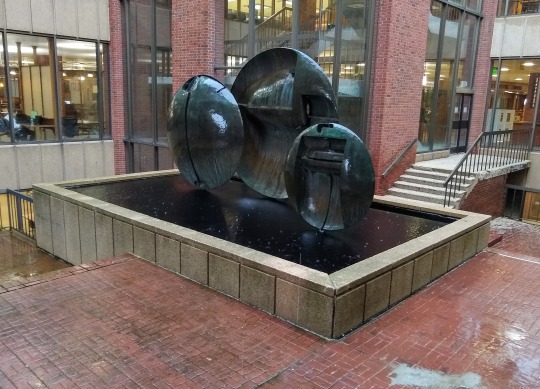

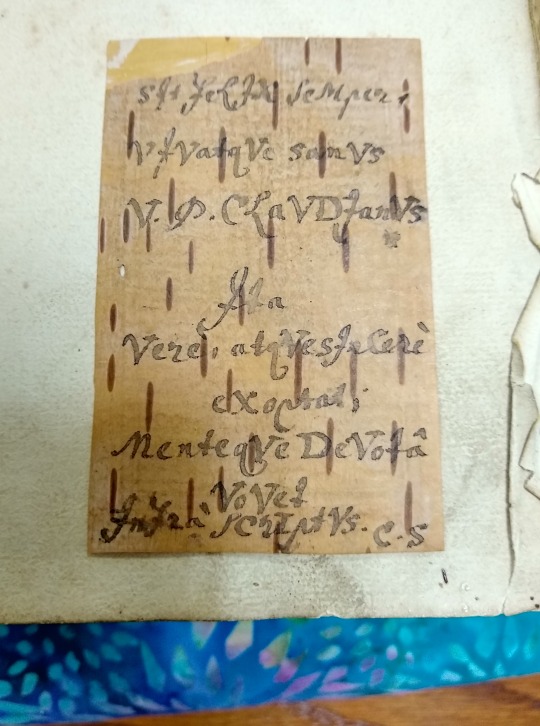
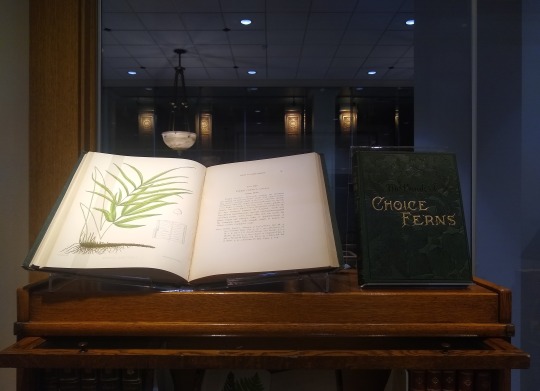
#history of books and printing#incunabula#Johann Grüninger#Milwaukee Public Library#Golda Meir Library#Biblia Latina#choice ferns#uwm special collections
0 notes
Text
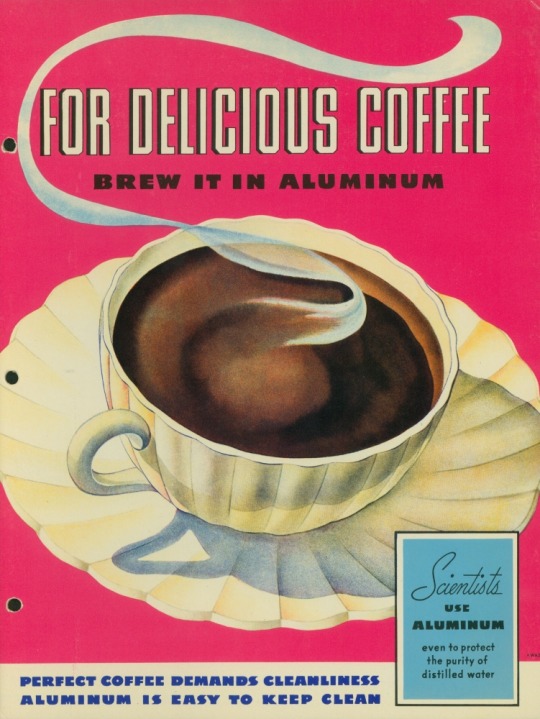
New Exhibition
A new exhibit is on view in our gallery space on the third floor of the Golda Meir Library featuring the West Bend Company Records.
The West Bend Aluminum Company was established in 1911 in West Bend, Wisconsin. This collection holds information about products developed, manufactured, and promoted by the West Bend Company throughout the twentieth century. This exhibition highlights the changes in how cookware and novelty kitchen products were presented to potential customers throughout the decades.
Come by to see some vintage advertising and unique recipes!
Image: Display Card, 1937. West Bend Company Records, 1911-1989. Milwaukee Mss 121. Box 108, Folder 5. Archives Department, UWM Libraries.
#UWM Archives#Vintage#Vintage Advertising#West Bend Company#West Bend#Vintage Food#Flavo-matic#Waterless cooker#Vintage recipe#Kitchenware#1910s#1920s#1930s#1940s#1950s#1960s#1970s#1980s
40 notes
·
View notes
Photo







Typography Tuesday
In fall 2022 three different sections of Art & Design Lecturer Mary Roley’s ART 109: 3D Concepts class engaged in The Dürer Letters Project. Students were asked to study and create a three-dimensional version of the letters designed by 16th-century artist and master print maker Albrecht Dürer as presented in his 1525 book, Of the Just Shaping of Letters, several modern facsimile editions of which may be found in the UWM Libraries, including Special Collections. The results of the project are now on display in three cases located in the Daniel M. Soref Learning Commons, located on the first floor, west wing of the Golda Meir Library, west wing, first floor through January 31, 2023.
Bringing Dürer’s 2-dimensional designs to life in a 3-dimensional form introduces students to the crucial relationships between ideation, form, and technique in the creation of successful three-dimensional art. The project simultaneously illustrates how essential other disciplines likes science, language, and geometry are to the making of art. Careful observation of Albrecht Dürer’s letters acquaints students with the formal principles and elements of design.
These foundational theories comprise the language of design that all art students must become proficient in, and this project marks the beginning of the student’s journey toward fluency in that language. The display is a manifestation of countless design decisions guided by timeless academic and artistic theories and techniques and shows the true zeal with which these students engaged in their craft.
View another post on Dürer’s Of the Just Shaping of Letters.
View more posts relating to Albrecht Dürer.
View other posts with dimensional letters.
View more Typography Tuesday posts.
#Typography Tuesday#typetuesday#Typography Tuesday#student projects#UWM Art & Design#Mary Roley#ART 109#3D Concepts#The Dürer Letters Project#Albrecht Dürer#of the just shaping of letters#dimensional letters#dimensional alphabets#dimensional typography#21st century type
53 notes
·
View notes
Text
Allied security with the main library told me I can't have a cart on property so I advised her to tell everyone to leave then if I have to leave.....don't let them win....it's not valid just lawless and just hurts them worse later to not have COVID on the door closed due to viral scares and Germany is right the street walking conflict and sound bombs are bad enough under republicanism to allow people to go home
I explained to her I do it to avoid assault and battery and the people she advocates for...........are people who steal homeless property as the public works because their with bolsoneros their not diplomatic peace militias who organize strategy with indigenous warriors they want to blow everything up
Those are people who nuke the Amazon rain forest
They target me because I was with golda meir Milwaukee on nuclear psychiatry and they view me as a random unusual though I did a basic job that's discreet and not that important but the spectacle of rapeing a white chick for multi cultural fascism to just go take stuff renews the nras lease and no one else's.....
Those are racists and they try to call attacks on white reason to spread the company globally for safety and no one wanted that or knew it was votes
I told her I was telling her it because she shouldn't lie to herself and believe it's about me or personal in any way I am one fact on a checklist and if they attack me they will attack you
You shouldn't be deceived by the city public works in anyway they are hell.....os.....and that's all they do is try to kill people of hells
I told her my civil case against allied security is that my cart is like the cars......it is an advertisement and I didn't do anything other then a little job and it's wrong for these people to not give me my street wages and stalk around as fashion victims
So I told her she should call 311 if advertisement is wrong on the property then you should tell everyone to get off the property and look like orson wells societism
If they can go put short ass on the chairs up there then it's not wrong to be a normal health is carrying disease and my street property isn't different from anything
I explained to her if my cart isn't by cameras and shown to be not abandoned the public works would just steal it and the expression of this conflict is that horrible.....if I don't have my blankets.........my head would be on Concrete for the fascist traffick sound bomb....they all have to fashion victim if their car was stolen it would happen to them same thing
Then she started sex harassing me to conform to the butt modeling.........telling me to be ineffectual and a woman slur weak and without attempts at covered dignity like it's okay if it's just a few little bags and if my skin is exposed to the bugs with intense chemical applications
So be a vanity that parasites or more pride and everyone can be pride?.....sycophants on a male practice that antagonizes a sycophant till it parasites on the male and parasitism becomes pride
Isis......
And I need a machete for the cane the men need to lose their heads to the dignity of Queen Mary.....and the beautiful martyr Catholic mothers
People like those public works are fucky jail trained sex offenders and if it's threatened to cut my head off they will cut their head off if they won't leave me alone
My professor told me I would be judged internationally by who I associate with so although I appreciate that you feel warning me is a peace strategy.....you can also I have seen other women with allied security........just leave if given their list to do its COVID and you don't have to stalk us with your masochism the states didn't prevent that....
I told her I don't carry my bags because it does cause me shoulder injuries with a heart condition to have to walk around useless to me parking lots that emit hazardous conditions.........I have to be disrobed to it and the decisions of other women are a completely different gender of no homo genetic reality to stalk me to conform to
There has to be a valid research purpose to see look at her she vaccines and copes prostitution ally
The thing is my property is survivalism so stealing it isn't like wealth it isn't a copier or an inconsequential........it's something that could.......if lost stolen or missing finally kill me and quite frankly no one wants to test God or know that......Timothy....truth is gays that want to know something on a girl are pushy people and no one liked Michelle Collier anywhere sometimes
0 notes
Text


My school seems to be starting some sort of ‘Finals Shrine’ in the library stairwell
2 notes
·
View notes
Text
Week 8 - Industrial Design

Headphones: During midterms, my headphones have been with me a lot. The design of the headphone is useful because you can use it to help with listening to things on a phone, laptop, etc. without disturbing people next to you or nearby you. The design is also simple and isn’t complicated to make use of.

Clock: The clock has also been really useful to me during the weeks of midterm season. With the design of this clock, you can see and read the numbers and tick marks very clearly. The hands of the clock design are also seen very well, even from afar, and move at a nice pace that tells accurate time.

Chair and Table: Before going to class, I walk pass the Grind in the Union and I noticed the chairs that were outside. The design of the chair is nice and it’s purpose of it is fulfilled as people are able to sit on the chair. The table accompanying it is also helpful, especially if people want to study in that area, the table allows for things such as laptops and notebooks to be placed there or even a drink if you buy coffee from the Grind.

Buildings: For both of these buildings I see them every time I wait for the shuttle near the Golda Meir Library. The first building, I believe is Sandburg on campus. The second building, I believe is Enderis Hall. I always found the design both of these buildings quite interesting, especially because I have always only seen it from the outside. Observering the design for Sandburg, their are a variety of windows; and though the windows look all about the same, their are also some on the side that are smaller. For Enderis, their are also a variety of windows, but the design closer to the top is quite interesting as it starts to form a more rectangular shape and it is very wide.


Traffic Cone: The design of the traffic cone is to allow people to see that their is something happening, specifically construction. There has been a lot of construction lately, and since the start of midterms I’ve been noticing the traffic cones even more and that their intended purpose is being used.

Water Bottle and Water Bubbler: The design of this water bottle is to allow someone to drink and store water in this. Unlike other water bottles, this one has a straw in it. The purpose of this object is being fulfilled by being able to store water and getting to drink it later. Similar to the water bottle, the water bubbler’s purpose is to also allow someone to drink water from it.


Tupperware: For the tupperware, its purpose of its design is to hold things in it, such as food, little objects, etc. For me, I’ve been using the tupperware to store my USB drive’s, which have been really helpful because none of my USB’s get lost when I’m traveling to places or commuting to school and back home.

Vase with Plant: For the vase, its purpose of its design is being used by having a plant it in. It’s located in my parent’s dinning room and I’ve been working in the dining since the start of midterms and started to notice the shape of the vase and the color of (which is a pastel green).
0 notes
Photo


Project Description
Dorm-Soleil is a Freshman dormitory that is oriented for incoming students who have yet to declare their major. The building serves as a liaison for the school as it is designed to be both a familiar and interesting aspect of Campus. The structure utilizes the psychology of color, implementing the use of natural earth tones, which help students cope with stress and feel connected to nature. The design is meant to be familiar for introverts and interesting for extroverts. It achieves this goal with a systematic room arraignment that is recognizable but digresses from the mundane with a unique floorplan that utilizes smooth walls and modular group breakout spaces. The design encourages exploration. Each breakout space is located in between every room connecting residents in small groups, with larger spaces located throughout the center of the space. The structure based in between UWM’s Golda Meir Library and Garland Hall takes up a vital walking corridor on campus. To mitigate the loss of the walkway corridor, the building has a brie solei walkway on the Eastern side. This allows a path for students and provides a shade for them during the summertime. Dorm-Soleil is built not only to house students but create a connection to UWM.
0 notes
Text
Tumblr VII
Le Corbusier was a famous architect who practiced purism in his work and created the 5 Points of Architecture. Those 5 points are supports (often concrete columns), roof gardens, free designing of the ground plan, horizontal windows, and free design of the facade. His designs were highly influential and were described as a machine for living, his designs could be described as “Promenade Architecturale”, meaning he would design the structure to force the viewer to move throughout the building in order to experience the work. He continuously looked to new means to technology, while still showing appreciation for classical and historical means. His practice also often had a strong connection to nature, incorporating it into the structure. (Image Source: ArchDaily.com)

Le Corbusier’s work Villa Savoye was built between 1929 and 1931 in France as the Savoye families country home. This is one of Le Corbusier’s most famous works, incorporating his five points of architecture. As you can see above in figure 1, the Villa Savoye incorporates his first point of supports. the structure is lacking traditional supporting walls around its base, but rather has concrete columns that support the building. He also incorporates the point of an open floor plan, creating inter walls only when aesthetically necessary. this allows for the light to carry through the home. Next, you’ll notice the horizontal windows that wrap all the way around the home. These windows are large and let in a lot of natural light, as well as a connection to nature. The exterior of the structure is simple, the facade is free of any design. This allows the exterior to be not load barring, allowing the home to rest on stilts. Finally, Villa Savoye has a rooftop garden. This is another aspect that allows for a closer connection to nature, as well as it’s a functional purpose to improve temperature control. This design represents his design methods of a “Promenade Architecturale” through spiral staircases, an open floor plan, a pull-in garage, and the roof terrace. The rooftops terrace also shows Le Corbusier’s inspiration to historical references, connecting it to ancient Arabic Architecture.
When looking around campus, the Golda Meir Library pulls my attention to connections of Le Corbusier’s designs. The first thing that pulled me is the supports that hold up the building in its center, allowing you to walk under the building to get in. Next, the Golda Meir has a grassy area on its rooftop, assuming it helps improve temperature control, but Le Corbusier would say that the design also helps to bring the students closer to nature. Lastly, in spite of it in actuality being a very prominent aspect of the building, I notice it’s long windows that stretch around the building allowing in lots of natural light. The floor plan on the first floor of the library is a fairly open floor plan, divided by various working spaces.
0 notes
Text
Journal 7
Le Corbusier was a very influential Swiss-French designer of the 20thcentury. He was one of the creators of purism and is regarded as a pioneer of modern architecture. He worked in architecture, interior design, and painted as well. Today, buildings he designed are on the UNESCO world heritage site list in seven countries, 17 sites total.
He had five points of his architectural technique.
· Replacing load-bearing walls with a grid of columns bearing the structural loads
· Freedom in design of the floorplan, due to the absence of weight supporting walls
· The separation of the exterior of the building from a structural function – freedom in design of the façade, setting it free from structural constraints. Ability to have open and closed sections, further connecting to nature
· Horizontal windows, cutting the façade along the entire length, light each room equally
· Roof gardens and terrace, support plants growing there, provide further space and green area, while providing insulation to the building
While Le Corbusier usually designed buildings for wealthy clientele, he also designed the Unité d'Habitation for Marseilles, further used in several other European cities including Berlin. Originally meant to have a steel frame support, it was instead was made of rough cast concrete due to post-war shortages, as it was constructed between 1947 and 1952. The planning was inspired by a soviet communal housing project completed in 1932, and the Unité d'Habitation itself has inspired other housing buildings, notably many council estates in the UK, mainly with the coloured balconies and brutalist style.

The first floor is raised above the ground, where a car park lives underneath the building, on large pillars, showing the column structure running vertically through the building. While each apartment is in a rectangular shape, hallways only run every three stories, due to each apartment being two stories. Some areas have large windowed walkways next to the outside, and each unit has a balcony on the exterior, separating the living areas from having windows coming straight out of the exterior walls. With each apartment being open planned, but vertically extending into the heart of the building, to get light in, the entire exterior wall of each unit is made up of window space. While the building lacks a living roof, it does have some greenery, and provides a communal space for occupants, with what is today an art gallery, a wading pool for children, and what used to be a running track around the outer edge. There were also a variety of shops, restaurants, and a hostel for outsiders to stay, though today most have closed or been turned into specialty shops.
The most obviously Le Corbusier-esque building on campus is the Golda Meir Library, with the support columns in between the two sections. Similarly, the columns providing a walkway around the Kirc. The ground floor of the library is more exterior window than wall, and the floorplan is similarly open, being supported by all of the columns. Less obvious is Sandburg, with its green roof, though done more for environmental and agricultural reasons, plus it isn’t a communal area. But how wonderful it would be if it was.
https://www.dezeen.com/2014/09/15/le-corbusier-unite-d-habitation-cite-radieuse-marseille-brutalist-architecture/
0 notes
Text
Week 7 - The Modernist Architecture of Le Corbusier
Le Corbusier was a famous architect who practiced purism in his work and created the 5 Points of Architecture. Those 5 points are supports (often concrete columns), roof gardens, free designing of the ground plan, horizontal windows, and free design of the facade. His designs were highly influential and were described as a machine for living, his designs could be described as “Promenade Architecturale”, meaning he would design the structure to force the viewer to move throughout the building in order to experience the work. He continuously looked to new means to technology, while still showing appreciation for classical and historical means. His practice also often had a strong connection to nature, incorporating it into the structure. (Lecture Notes, 10/15)

(Fig. 1, Wikipedia)
Le Corbusier’s work Villa Savoye was built between 1929 and 1931 in France as the Savoye families country home. This is one of Le Corbusier’s most famous works, incorporating his five points fo architecture. As you can see above in figure 1, the Villa Savoye incorporates his first point of supports. the structure is lacking traditional supporting walls around its base, but rather has concrete columns that support the building. Next, you’ll notice the horizontal windows that wrap all the way around the home. These windows are large and let in a lot of natural light, as well as a connection to nature. The exterior of the structure is simple, the facade is free of any design. This allows the exterior to be not load barring, allowing the home to rest on stilts. He also incorporates the point of an open floor plan, creating inter walls only when aesthetically necessary. this allows for the light to carry through the home. Finally, Villa Savoye has a rooftop garden. This is another aspect that allows for a closer connection to nature, as well as it’s a functional purpose to improve temperature control. This design represents his design methods of a “Promenade Architecturale” through spiral staircases, an open floor plan, a pull-in garage, and the roof terrace. The rooftops terrace also shows Le Corbusier’s inspiration to historical references, connecting it to ancient Arabic Architecture. (Lecture notes, 10/15)
When looking around campus, the Golda Meir Library pulls my attention to connections of Le Corbusier’s designs. The first thing that pulled me is the supports that hold up the building in its center, allowing you to walk under the building to get in. Next, I notice it’s long windows that stretch around the building allowing in lots of natural light. The floor plan on the first floor of the library is a fairly open floor plan, divided by various working spaces. Lastly, the Golda Meir has a grassy area on its rooftop, assuming it helps improve temperature control, but Le Corbusier would say that the design also helps to bring the students closer to nature.
0 notes
Text

We're moving!
The UWM Archives is currently closed as we move to our new space on the third floor of the Golda Meir Library. We can't wait to show you the new area!
33 notes
·
View notes
Photo
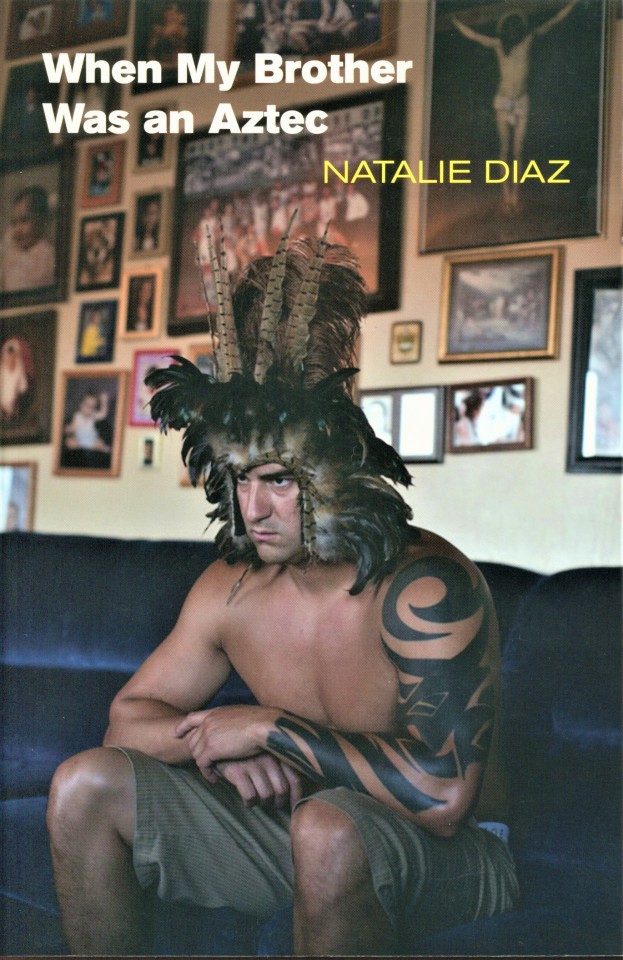
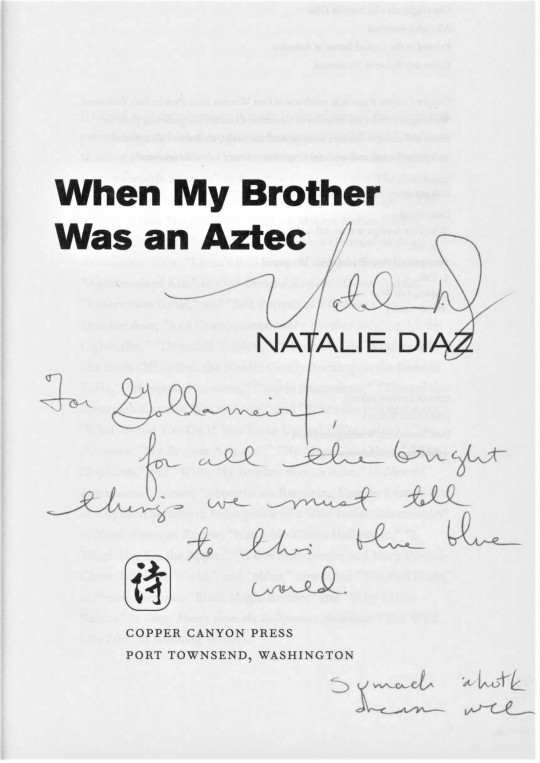



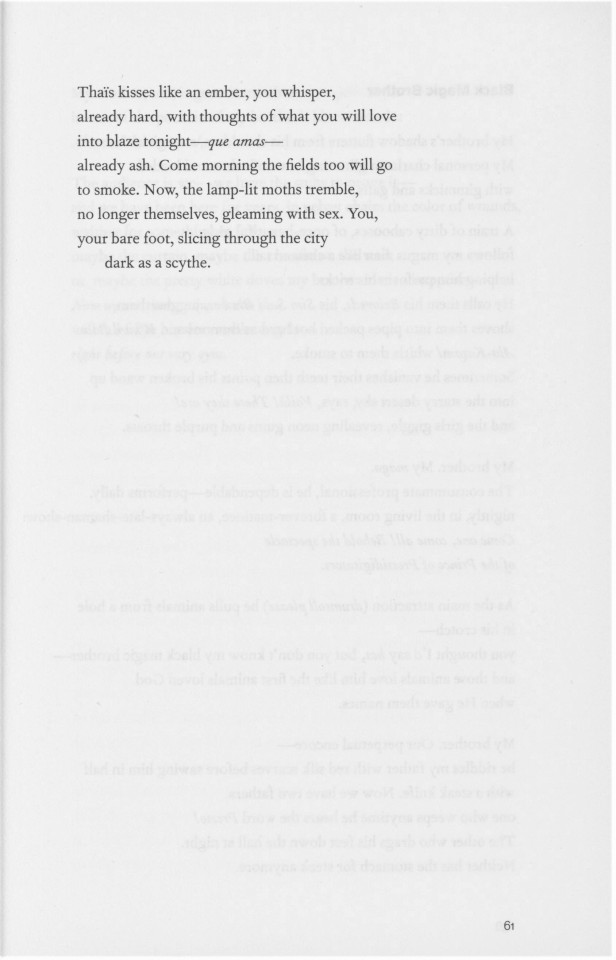
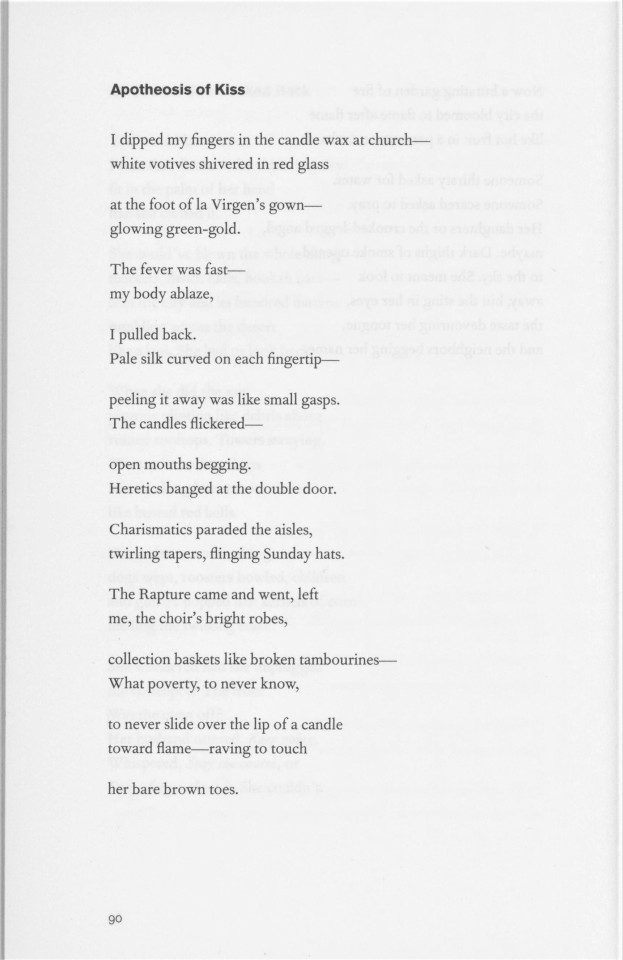
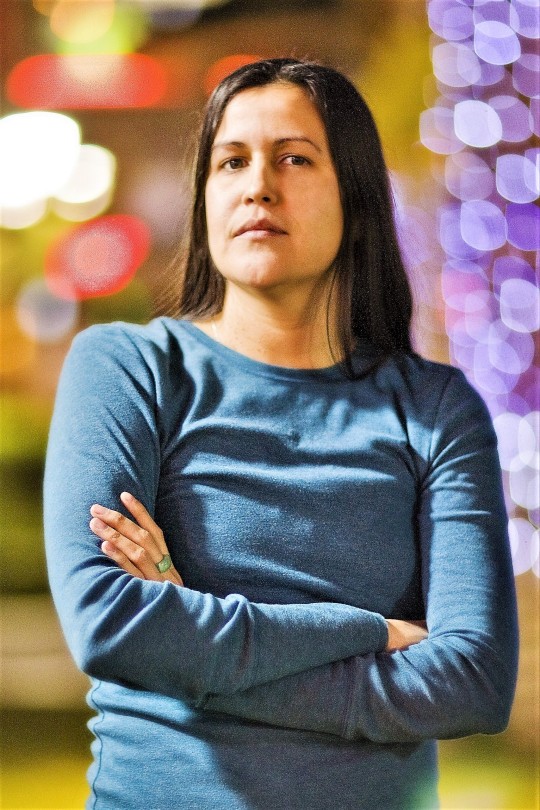
Native American/First Nations Woman Writer of the Week
NATALIE DIAZ
Coming at you with another Indigenous woman writer, we present Mojave and Latinx poet, former college and professional basketball player, and Indigenous language activist, Natalie Diaz. Diaz is the author of two collections of poetry. Her most recent publication, Postcolonial Love Poem, published in 2020 by Graywolf Press, won her the 2021 Pulitzer Prize for Poetry and was a finalist for the National Book Award among many others. UWM Special Collections preserves a signed copy of Diaz’s first poetry collection, published in 2012 by the Copper Canyon Press, When My Brother Was an Aztec. This debut collection was the winner of the 2013 American Book Award for poetry as well as a being a Kessler Poetry Book Award finalist, and was also a 2012 Lannan Literary Selection. [Note: the inscription reads “For Golda Meir”; the UWM Library is named after Israel’s first woman prime minister, as Meir was raised and educated in Milwaukee and attended a UWM predecessor institution.]
Born on the Fort Mojave Indian Reservation in Needles, California, Natalie Diaz is Mojave and an enrolled member of the Gila River Indian Community. Diaz expresses the deeply rooted historical culture found in tribal life in When My Brother Was an Aztec through her documentation of the persona her brother takes on as a fallen Aztec King of mythic power while struggling with addiction. She details her early life dealing with poverty on the reservation, forced assimilation, the bonds of family, witnessing her brother’s struggle with crystal meth, issues with racism off-reservation, and her own growth into adulthood where she explores her sexuality. The cover art for this collection is by Roberto Westbrook and portrays the character that Diaz’s brother identified as while struggling with his addiction.
A speaker of the Mojave language, as well as English, and Spanish, Diaz utilizes all three languages in When My Brother Was an Aztec, beginning the book with a Spanish proverb, “No hay mal que dure cien años, ni cuerpo que lo resista,” which translates to “There is no evil that lasts a hundred years, nor a body that resists it.” In the struggle to keep the Mojave culture alive, Diaz has begun recording and transcribing the Mojave language with the last elder Mojave speakers in 2012 with the help of Arizona State University for the Fort Mojave Language Recovery Program. While working as an Associate Professor at Arizona State University in 2018, Diaz was named the Maxine and Jonathan Marshall Chair in Modern and Contemporary Poetry.
Author Photo is by Joseph Gidjunis.
See other writers we have featured in Native American/First Nations Woman Writer of the Week.
View more Women’s History Month posts.
– Isabelle, Special Collections Undergraduate Writing Intern
We acknowledge that in Milwaukee we live and work on traditional Potawatomi, Ho-Chunk, and Menominee homelands along the southwest shores of Michigami, part of North America’s largest system of freshwater lakes, where the Milwaukee, Menominee, and Kinnickinnic rivers meet and the people of Wisconsin’s sovereign Anishinaabe, Ho-Chunk, Menominee, Oneida, and Mohican nations remain present.
#Native American/First Nations Woman Writer of the Week#women's history month#natalie diaz#when my brother was an aztec#national book award#american book award#poetry#woman poets#native american poetry#mojave#arizona state university#language recovery#gila river indian community#postcolonial love poem#roberto westbrook#joseph gidjunis#lannan literary selection#old dominion university#basketball#california#isabelle
118 notes
·
View notes
Text
Week 7
Le Corbusier was a highly-influential twentieth century architect, designer and artist. While he is most widely known for his architectural design, Le Corbusier was also designed furniture, was one of the people behind the Purism movement and one of the people behind the architectural journal L’Esprit Nouveau, which would become a platform for the spread of his many ideas and ideals about modern architecture. This is where he would first publish his “Five Points of Architecture.”
These five points include: load-bearing concrete columns in place of load-bearing walls, free designing of the ground plan (made possible by these load bearing columns), rooftop gardens, horizontal windows to allow light and air in and free design of the facade of the building (also made possible by the load bearing columns).

One of Le Corbusier’s earliest projects was Villa Le Lac, a lakeside home built for his parents in Switzerland. While it was built before his Five Points were published, we still them evident in this small home. The most obvious example of this is the flat roof, designed so the space could be used. In Villa Le Lac this serves as a decorated sun deck, whereas these rooftop spaces would almost exclusively be gardens later in his career. Despite only being one story, Villa Le Lac is made of reinforced concrete, much like many of his later works. The villa also includes long, horizontal windows, giving a panoramic view of the lake it sits on and has movable, partition-like walls and “built-in” furniture on the inside, giving the inhabitants of the house full control of the interior layout.
Our Golda Meir Library reminds me of a more Brutalist Le Corbusier work in a lot of ways. Windows wrap around entire sections of the upper floors, giving people in the library a panoramic view of much of campus. The rooftop is flat for functionality purposes. While it doesn’t have a rooftop garden, it does have solar panels and a green roof. The way the first floor of the library is divided into 2 separate halves, being connected starting at the second floor, creates an open walkway “through” the building that plays with interior/exterior space in a way that many Le Corbusier works do.
0 notes
Photo

Back to studying~📖 #study #studygram #studyblr #college #univeristy #uni #italian #latin #marble #aesthetic #studying #library #goldameir #uwmilwaukee #goldameirlibrary (at Golda Meir Library Central Library)
#library#uwmilwaukee#studygram#aesthetic#goldameirlibrary#univeristy#studyblr#study#marble#goldameir#latin#uni#studying#italian#college
2 notes
·
View notes
Link
Omar and Tlaib are echoing the Republican Party's support of censures and repeated threats to apply economic sanctions against the Jewish state from the days of President Dwight Eisenhower. Eisenhower tightly controlled U.S. foreign policy and was pivotal to the UN Security Council's censuring of Israel in November 1953, March 1955, and in January 1956. The reasons for each rebukes were similar, as they all involved what Eisenhower believed to be illegal aggression and violence against Israel's Arab neighbors.... The first U.S.-backed censure in October 1953 followed an Israeli Defense Force attack on the village of Qibya, near Jerusalem on the Jordanian-controlled West Bank. "They shot every man, woman and child they could find," reported Time magazine, "then turned their fire on the cattle," while dynamiting houses, a school, and a mosque. Sixty-nine Palestinians lay dead, with no Israeli casualties. Prime Minister Churchill was repulsed by the atrocity and supported Eisenhower's decision. In July 1954, a self-described Israeli "terror unit" embedded in Egypt's still-vibrant Jewish community bombed two U.S. consulate libraries as well as British civilian targets in Cairo and Alexandria. Israel's goal was to destabilize Egyptian strongman Gamal Abdel Nasser's government and to pin blame for the attacks on the Muslim Brotherhood.... Following the incidents in Egypt, the U.S. again led a UN censure of Israel and warned that sanctions were imminent.... In December 1955, an IDF assault against Syrian positions caused Eisenhower and Dulles to react swiftly with another censure resolution. At the United Nations, U.S. Ambassador Henry Cabot Lodge charged that "previous representations by the Council and the United States government have failed to halt the mass of Israeli attacks on its Arab neighbors and the whole Palestine situation has deteriorated as a result."... Eisenhower wanted the United States to remain neutral in the Arab-Israeli conflict and he therefore pledged that America would side with the victim of aggression should all-out war erupt. Leaders of the three nations that invaded Egypt, starting on October 29, didn't believe him: Britain presumed a special relationship; France concluded he was bluffing; and the Israelis expected Eisenhower to flinch because he faced reelection on November 6. Surely he'd succumb to pressure from Jewish voters. Instead he cut off oil and loans to Britain, among other measures which torpedoed the offensive. In tandem with Dulles, he compelled Anglo-French forces to leave Egypt in December. Despite U.S. protests, however, Prime Minister David Ben-Gurion declared that Israel had overriding defense priorities and refused to withdraw IDF units from Egyptian terrain. A curious leak then occurred in Washington on February 17, 1957. It concerned classified details about the war of 1948-1949. At that time, a defense pact still existed between Britain and Egypt. Once Israeli forces had pushed into Egypt in late 1948, London had issued a secret ultimatum for Israel to retreat.... Moreover, Truman, on December 30, had just issued America's own demand that Israel pull out. Israel did so within a week. Nearly eight years later, Eisenhower used this incident to show his country that Washington, under the Democrats, had already acted tough indeed toward Ben-Gurion and Israel. Then came Eisenhower's promise to go beyond mere UN censures. On February 20, 1957, President Eisenhower spoke from the Oval Office about U.S. difficulties with Israel. "Should a nation," he asked, "which attacks and occupies foreign territory in the face of United Nations disapproval be allowed to impose conditions on its own withdrawal?" He was set to push UN sanctions and to halt private U.S. business dealings with Israel, which included the purchase of Israeli bonds. In response, on March 1, Foreign Minister Golda Meir announced a prompt withdrawal from all Egyptian territory.... The last time that Washington placed "the Palestine Question" on the UN Security Council agenda in order to censure Israel was in 1966.... The 1967 Arab-Israeli war would alter the landscape. The result is today's predicament: first, a half-century long military occupation with conditions in the West Bank that South African Nobel laureate Bishop Desmond Tutu describes as "worse than apartheid"; second, Israel's recurring violations of international law, and of seven decades of U.S. policy, as its settlements expand into occupied territory; and, third, another open-ended body count of Palestinians. Once more, "the vast majority of those killed [have been] unarmed," such as the 214 shot within Gaza by Israeli snipers throughout the 2018 protests. In the absence of U.S. leadership, pressures for sanctioning Israel are this time coming from below, as from the two Congresswomen.
#history#palestine#israel#donald trump#ilhan omar#rashida tlaib#bds#boycott divestment sanctions#republicans#dwight eisenhower#foreign policy#middle east#politics
0 notes
Text
A Great Loss
You all probably know the old joke according to which there are three stages of life: youth, middle age, and “you look fabulous.” Hardy-har-har! But now it turns out there’s a fourth stage, the one characterized (at least retroactively) by the response “he/she was still alive?” For many of us, the death at age 96 last week of Doris Day was in that last category: I think I thought she had died years ago. But now I have a new candidate for that fourth stage: Herman Wouk, who died last Friday at age 103. This is more than slightly embarrassing to me however, because it turns out Wouk’s last book, published just three years ago, was entitled, Sailor and Fiddler: Reflections of a 100-Year-Old Author. How can I have missed that? I was and am a great fan, and to this day I consider Wouk to be one of our least appreciated American authors, a true giant who apparently ran afoul of the literary establishment by publishing book after book that resonated deeply with the reading public and brought him the commercial success that those people find impossible to square with true literary talent. I couldn’t disagree more. Mind you, those people didn’t (and don’t) think much of John Steinbeck or James Michener either.
Far more accurate in my mind were those who, at a gathering held at the Library of Congress in Washington in 1995 to celebrate Wouk’s eightieth birthday, acclaimed Wouk as an American Tolstoy. And, indeed, Wouk—in this just like Tolstoy—filtered what he saw of the world through his own religious consciousness to produce pageant-like novels filled (like life itself) with countless characters, some centerstage and others present only briefly for a moment before disappearing into the wings, some crucial to the development of the plot and others depicted as merely standing next to more pivotal personalities. And the intrigues and adventures of those personalities—varying from profound to trivial and from inspiring to shameful (and yet somehow never crossing the line to tawdry, let alone to truly vulgar)—those stories became, for both Wouk and Tolstoy, the canvas on which to paint a picture of the world not merely as they saw it but, far more profoundly, as their insight allowed them to understand it. That, after all, is the novelist’s true calling: not merely to tell make-believe stories about make-believe people but to use the narrative medium to say something insightful and moving about the real-life world in which the author and his or her readers actually live.
Like most of my readers, I suppose, my first Wouk novel was The Caine Mutiny, for which the author won the Pulitzer Prize in 1951 and which was made into an Oscar-nominated film in 1954 starring Humphrey Bogart, Jose Ferrer, Van Johnson, and Fred MacMurray. I loved the book, found it far more engaging than the movie, and resolved to read more, which I did: I believe that I read every single one of Wouk’s novels in the course of my lifetime as a devoted fan of his writing. I’ll read Sailor and Fiddler this summer.
Marjorie Morningstar was the first of Wouk’s novels to be published during my lifetime. (I had to wait a bit to get to it, though, since I was only two years old when it came out.) I had to read it surreptitiously, though—according to the idiotic rules that pertained during my teenage years, Marjorie Morningstar was a “girls’ book,” so not one any boy would be caught dead reading…at least not in public—and I also saw the 1958 movie starring Natalie Wood. (Other books boys didn’t read included Betty Smith’s A Tree Grows in Brooklyn and, of course, Louisa May Alcott’s Little Women. Enough time having passed, I now feel able to admit to having read both. Don’t tell the guys!) It too affected me deeply, but more because of its Jewish content than its plot…and also because of the fact Herman Wouk was born in the year of my mother’s birth and Marjorie Morningstar, née Morgenstern, in the year of my father’s. Because of that, I think, the whole book felt like a kind of a window into my parents’ world, and particularly into the strange ambivalence they brought to their Jewishness that Wouk captured perfectly in the opening chapters of the book. In the end, Marjorie sees the error of her ways—although she is given a strong push in that direction by her own failure to succeed as a Broadway actress—and ends up abandoning her decision to abandon her Jewishness, marrying a nice Jewish fellow named Milton Schwartz, and settling into suburban Jewish life. The Jewish ending had no precise parallel in my parents’ lives (other than them getting married and living happily ever after), but the effect the book had on me was profound…and eventually I lived out its dénouement personally by adopting an observant lifestyle and embracing a version of Judaism my parents felt more than able to live without.
And then there were The Winds of War and its sequel, War and Remembrance, published in 1971 and 1978 respectively. I read both with the greatest enthusiasm, identifying particularly strongly with one specific character, Berel Jastrow, who is depicted as being in 1941 roughly the age I was when I was reading the book and who functions as the Jewish heart and soul of the story line in the second book. What was remarkable about the books, I thought then (and still do), is how Wouk depicts the Hitler’s war against the Jews as one of two simultaneous wars of aggression being waged by the Nazis: one against any nation deemed to be standing in the way of Germany’s expansionist goals and the other against the Jewish people. Both wars are depicted in detail in both books and, indeed, the story revolves around two families, the Henrys and the Jastrows, who respectively represent these two wars in Wouk’s narrative. I found Wouk’s ultimate point—that neither war is fully comprehensible without a clear understanding of the other—both validating and motivating. Decades later, when I read Ken Follett’s Winter of the World (the second book in his “Century” trilogy), a book recounting the intertwined stories of five families during the years of the Second World War but in which the Shoah is almost never mentioned and is otherwise wholly absent from the narrative, I was struck by the degree to which Wouk’s worldview had become my own.
I think my favorite Wouk book is Inside, Outside, one of his least well-known works. Published in 1985, it tells the story of four generations of the same Jewish family from the vantage point of one Israel David Goodkind, who belongs to the third generation of the four. It’s an interesting book in a lot of different ways—filled with historical personalities like Richard Nixon (delicately left unnamed in the book but unmistakable), Golda Meir, Ira and George Gershwin, Marlene Dietrich, Bert Lahr, Ernest Hemingway, and others, what the book felt to me like it was really about was how a man who made every conceivable sacrifice to thrive in the highest echelons of American society, how even such a man in the end felt drawn back to his roots and ended up embracing a version of Judaism he had earlier on mostly rejected. That image of the Jewish individual sacrificing everything to succeed in the secular world and then returning, one way or the other, to his or her roots keeps coming back again and again in Wouk’s books. That isn’t my personal story, but it is the story of so many people I’ve known over the years that it is nonetheless very resonant with me. I suppose I should mention that I read Inside, Outside in our apartment on the Heinrichfuchsstrasse in Rohrbach, the little town outside Heidelberg that Joan and I lived in during the years I taught in Germany. So I read this book about American Jewry when I myself was both inside and outside—the ideal setting! I wonder if I’d find it as compelling today. I suppose could find out easily enough.
There’s a lot more to write about. I read Wouk’s “Israeli” novels, The Hope and The Glory when they came out in 1993 and 1994. They’re expansive, big books, the first covering the years from 1948 to 1967 and the second moving forward through the Yom Kippur War, Entebbe, and, finally, Anwar Sadat’s visit to Israel in 1977. Like The Winds of War and War and Remembrance, Wouk tells his story by intertwining the stories of fictional characters and historical personalities, and he does yeoman’s work in both volumes: even today if someone asks me what to read to “get” the whole Israeli story, I send them to those two books.
There are lots more books I could write about. I read Youngblood Hawke, Wouk’s fictional biography of a young American author not unlike Thomas Wolfe. I read Don’t Stop the Carnival, about a Jewish New Yorker who attempts to escape his own middle-age crisis by moving to a Caribbean island. And, of course, I read Wouk’s book about Judaism itself, This Is My God, in which the author talks about his own trajectory as a Jewish American but leaves for readers to see just how many pieces of how many of his novels were rooted in his own understanding of the nature of Jewishness and the ultimate meaning of Judaism.
There have been many great American Jewish authors, but few, if any, wrote about the Jewish part of their Jewish characters with more insight, with more sympathy for the spiritual dilemmas they encounter engaging with the secular world, and with more overt affection than Herman Wouk. Yehi zikhro varukh. May his memory a blessing for his readers and for us all.
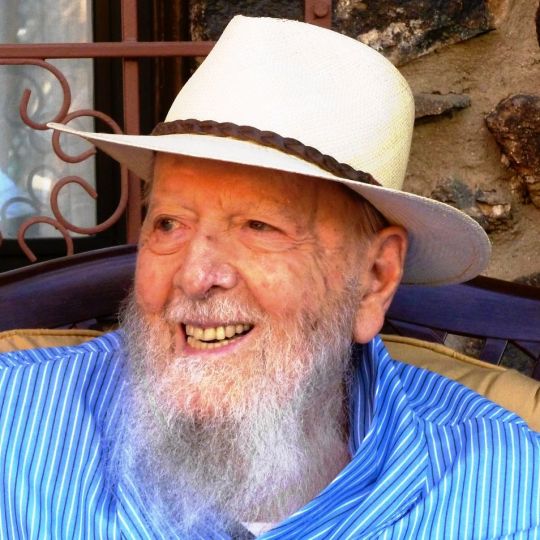
0 notes